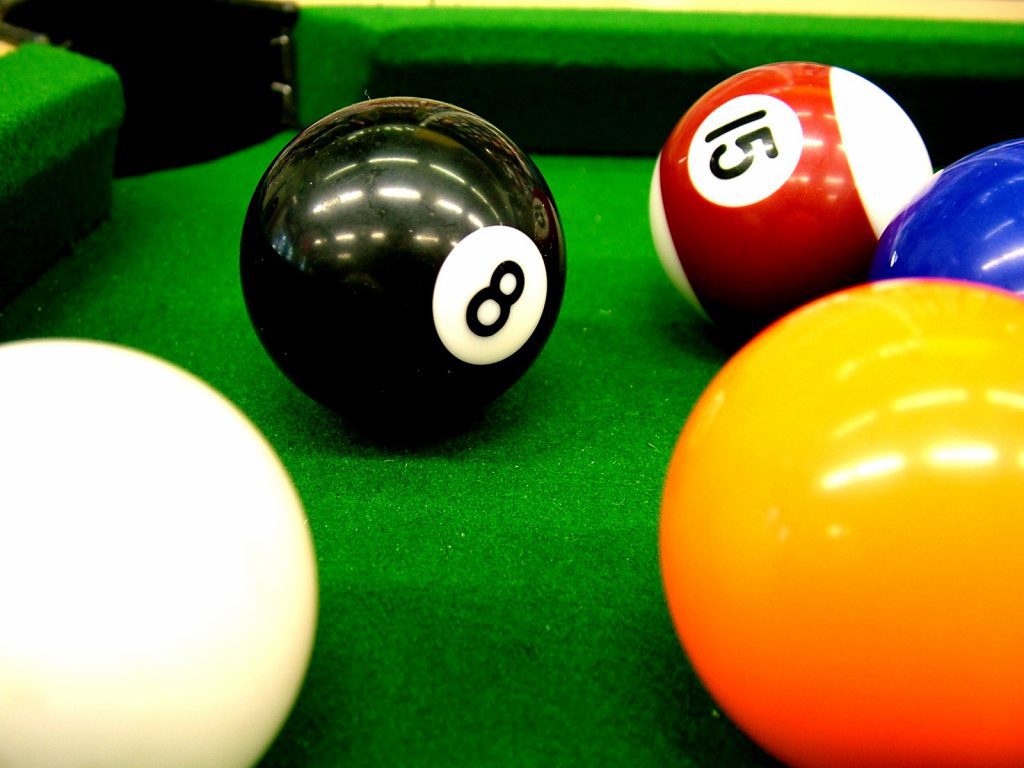The Crucial Choice: Picking Solids or Stripes After the Break in 8-Ball
The break shot in 8-ball is a big part of the game. You unleash the cue ball, scattering balls across the felt like colorful shrapnel. But the real test of your strategic mind begins after the dust settles. Here’s a dilemma every player faces: stripes or solids? This seemingly simple question can make or break your game.
While beginners might choose randomly, seasoned players meticulously analyze the post-break layout before committing. So, what factors influence this critical decision? Let’s delve into the key aspects that help you pick the winning group.
1. Analyzing Ball Distribution: A Clustered Mess or Open Highway?
The first and foremost factor is the positioning of the balls. Look for clusters – groups of your designated balls huddled together. These clusters can be both a blessing and a curse.
- Challenges with Clusters: Clusters can make it difficult to sink individual balls and create good angles for subsequent shots. Imagine a tight knot of solid balls blocking the pockets. It’s a nightmare for any aspiring pool champion!
- Opportunities in Clusters: However, clusters also present breakout opportunities. If you have a strategically placed ball near the cluster, you can use a combination shot (hitting another ball first to carom into your target ball) to break them apart and open up the table.
Here’s the key: Compare the difficulty of breaking apart each cluster. If the solid cluster is a tangled mess while the stripes are neatly separated, choosing solids might be a strategic blunder.
2. The All-Important 8-Ball: Is It an Ally or an Obstacle?
The 8-ball is the ultimate goal, but its placement after the break significantly impacts your decision. Here’s why:
- The 8-Ball’s Pocket Predicament: Ideally, the 8-ball should be positioned near a pocket with a clear path for sinking it later. However, the break might leave it nestled amongst your balls or the opponent’s, creating a potential self-snooker (accidentally pocketing the 8-ball and losing the game).
- Making the 8-Ball Your Friend: If the 8-ball sits favorably near a pocket after the break and is surrounded by your chosen group, it becomes an ally. You can strategically use your group’s balls to position the 8-ball for the final winning shot.
On the other hand, if the 8-ball is buried within the opponent’s group or blocks your shots, choosing that group becomes risky.
3. The Power of Position: Setting Up for Future Success
Beyond clusters and the 8-ball, consider the overall positioning of your balls. Look for balls that are:
- Close to Pockets: Balls precariously close to pockets are low-hanging fruit. Choosing the group with more such balls gives you an immediate advantage.
- Strategically Placed: Are there balls that can be used for combination shots or banks (using the rails to carom into your target ball)? These “key balls” can unlock the table and provide a path to victory.
By analyzing the positioning of your designated balls, you can assess how easily you can sink them and set up future shots.
4. The Deception Game: Can You Fool Your Opponent?
Sometimes, the best choice isn’t necessarily the easiest path. You can use the “wrong” group strategically to your advantage:
- Playing the Percentage Game: If both groups are equally challenging, consider choosing the group your opponent might think is easier. This throws them off guard and gives you the upper hand in terms of strategy.
- Setting Up Tricky Safeties: By choosing a difficult group, you might force your opponent to take a risky shot, potentially leaving you with a safety (a shot that makes it difficult for your opponent to score and gives you a tactical advantage).
Remember, the goal isn’t just to sink your balls; it’s to outsmart your opponent. Deception can be a powerful tool in your 8-ball arsenal.
How to crush the break – https://billiardsguru.com/8-ball-break/
If you need a good stick at a fair price – https://seyberts.com/
5. Experience is the Best Teacher: Learn from Every Break

Finally, remember that mastering the art of choosing solids or stripes takes time and experience. Every break presents a unique puzzle, and with each game, you become a better judge of the situation. Here are some additional tips:
Observe the Masters: Watch professional 8-ball matches and see how they analyze the post-break layout. Pay attention to their thought process and decision-making.
Practice Makes Perfect: The more you play, the more comfortable you’ll become analyzing the table and making the right call.
Practice! And don’t forget to have fun!
Discover more from Billiards and Pool
Subscribe to get the latest posts sent to your email.